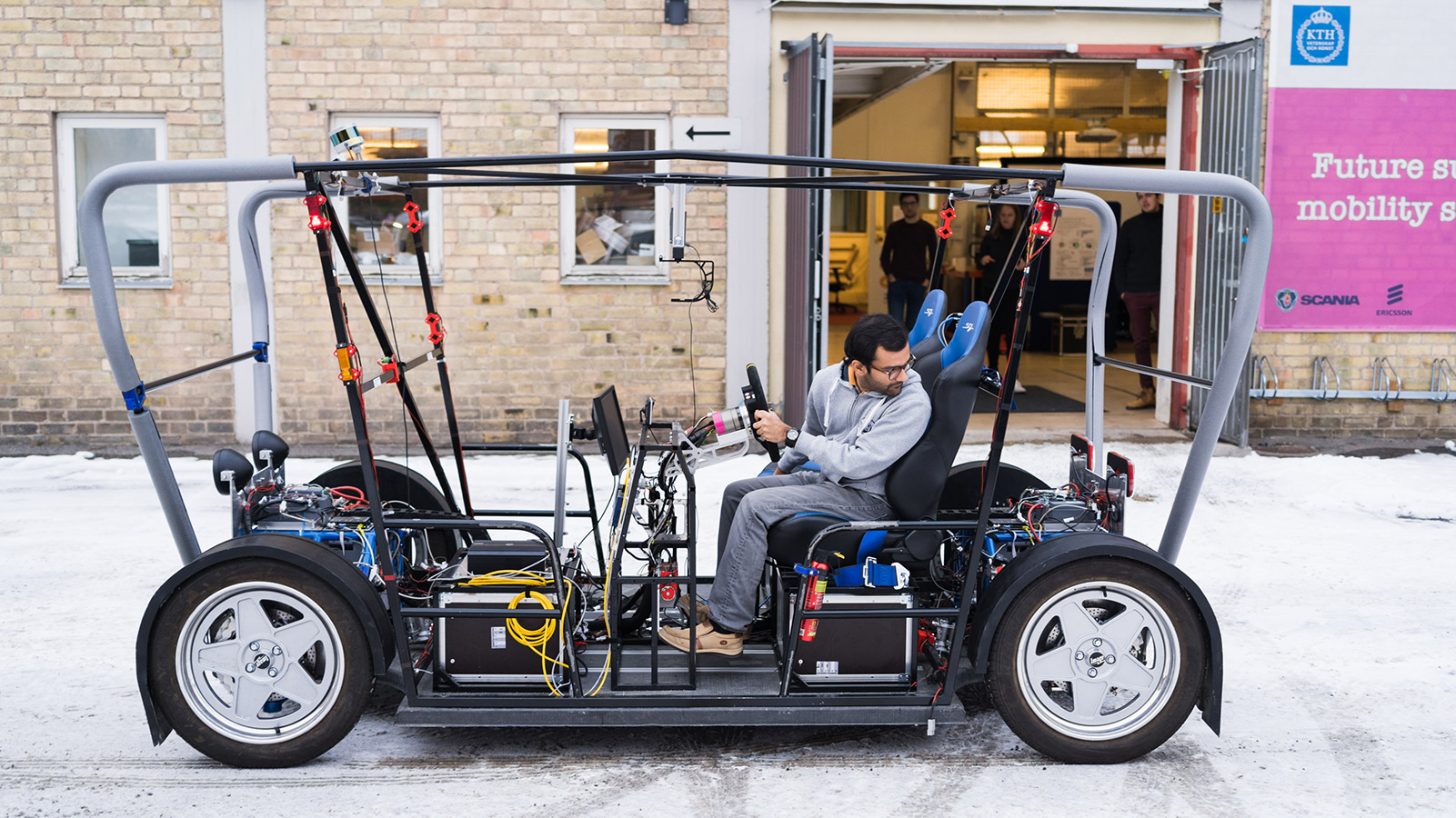Testing the transport system of the future
Meet the research centre Integrated Transport Research Lab – ITRL

Transport is a rapidly developing area with self-driving cars and robots around the corner. It also affects everyone in society. The research centre ITRL provides society and industry with the basis for decisions about the complex processes that shape the sustainable transport systems of the future.
If you want to know what public transport might look like in ten years, you can turn to the Integrated Transport Research Lab (ITRL). Anna Pernestål, director of ITRL, believes there will be greater variety than today combined with easy to choose options.
”I think we will have mobility as a service, that is, easy access to many different modes of transport. Today, people often choose between their own car and public transport solutions such as buses and trains, but in the future it will be easier to vary. Car pool, public transport, taxi, scooter and so on. We will have tools like apps making it easier to choose the best alternative for transport in any given situation, based on sustainability and what is most practical.”

This scenario with "mobility services" is one of several components of the sustainable transport systems of the future that ITRL is researching. Other important areas are infrastructure, connected smart transport, efficient transport, policy issues, how we function as users and what transport needs society has.
Understanding future transport systems
ITRL started on the initiative of Scania together with the then head of school at ITM, Jan Wikander, and several others at KTH.
”Scania’s then head of research had the idea of understanding transport research from different perspectives and then putting them together. He saw the need for systems research, not just technology, to understand how to jointly build the big transport system of the future in a sustainable way”, says Anna Pernestål.

ITRL complements Scania's own research and development and focuses on what otherwise ends up between organisations. Today, Ericsson and the Stockholm Region are also strategic partners, with the Swedish Transport Administration as co-chair on the board.

Strategies for integrated research
Although the integrated perspective was included in the vision from the beginning, it took some time to develop it in practice and understand what integrated transport research actually is, according to Anna Pernestål.
In concrete terms, this means creating dialogue and meeting places, and looking at how different areas affect each other and the whole. These areas can be everything from the use of connected smart systems to how people move in traffic.
”Here we work widely both within KTH and outside, with everything from mechatronics and robotics to behavioral science, business models and law.
Anna Pernestål says that one challenge is to integrate research from different fields to understand complex systems in depth. And it is precisely these methods for weighing perspectives together that are the research Anna Pernestål believes will have the greatest impact on society in the near future.
”Decision-makers need to weigh percentages against soft qualitative decisions. We can provide them with decision-making material, where different perspectives such as business models and research are weighed together.”
Quiet night traffic
An example of a project that shows ITRL's working methods is the one on silent night transports of goods in Stockholm.
”In Stockholm city, it was not allowed to run freight traffic between 22.00 in the evening and 06.00 in the morning. The main reason was noise. The problem is that it leads to deliveries of goods having to be made in the morning rush because stores want their goods before they open in the morning, says Anna Pernestål.
Together with the City of Stockholm, among others, ITRL carried out a pilot project with one truck from Volvo and one from Scania. An electric hybrid and a gas vehicle made deliveries at night in central Stockholm for a year and a half.
”We collected and explored data, tested various innovations, loading and unloading. We measured noise, including with a portable noise sensor. We looked at the whole chain, with everything from the drivers' experience to socio-economic calculations and business models. We made calculations of transport efficiency in dialogue with transport companies.”
The City of Stockholm has now taken the project further and is considering what the policy on night goods deliveries should look like in the future.
”It may be that it is possible to drive at night if you have an electric vehicle. Which in turn leads to the replacement of the vehicle fleet. A good example of how research can affect both policy and practice.”
Working in a research center
Anna Pernestål says that the center form benefits collaborations both across KTH and outside the academy.
”We have a great deal of trust from our partners, it gives us freedom. We do not need to specify beforehand what the research efforts look like, instead our partners are involved in the project development and we can work iteratively (in rounds, with successive improvements) and do tests.”
Text: Alexandra von Kern


